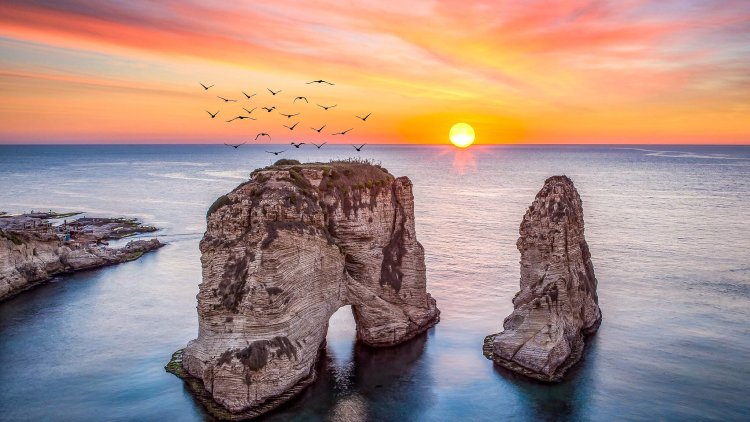Lebanon is a small country and is located on the east coast of the Mediterranean Sea, between Syria and Israel. This beautiful country is one of the few where you can spend the morning on the beach, and in the afternoon go to the ski resorts and ski slopes.
In just three hours of driving, you can get from one end of Lebanon to the other, and even though this is a small country, that doesn't mean you won't have much to see and visit. In Lebanon, at every step, you will find centuries-old history and culture, as well as beautiful nature. Lebanon is a country full of ancient Phoenician and Roman ruins, especially in the cities of Baalbek, Byblos, Sidon, and Tyre. Many of these cities are among the oldest settlements in the world. The capital of Lebanon is Beirut.
Lebanon is a good destination during the whole year. The great period for sightseeing is from March to May and from September to November, when the climate is warm and dry in most parts of the country, without great heat. This is also an ideal time to tour the mountains and taste wine. When it comes to visiting Beirut, the warmer months from June to September are perfect for swimming, sunbathing, and enjoying coffee. In winter you can ski in the mountains.
Skiing in the mountains of Lebanon, swimming on the beautiful and beautiful beaches of the Mediterranean, and contact with friendly people and food are just some of the reasons why you should visit this beautiful place, and we will help you discover the most popular tourist destinations in Lebanon.
Baalbek
If you are going to visit Lebanon, you must visit Baalbek, the city where the complex of ancient temples is located. The story of Baalbek is about 5,000 years old. Excavations around the Roman temple of Jupiter have revealed remains dating back to the Early Bronze Age (2900-2300 BC). This city is culturally and historically very important to Lebanon and that is why it is one of the most popular tourist destinations in Lebanon.
Byblos
Byblos is an ancient Phoenician port city, filled with hospitable people, old streets and ruins. In this city, you will see an incredible mix of tradition and modern people. In Byblos, as in Baalbek, you can see many historical remains and learn a lot about Lebanese culture and history. You can explore a lot in this historic city. The city of Byblos offers a variety of restaurants, hotels, and shops.
Tyre
Tyre was an important city of the Phoenicians during ancient Rome, and today there are many ancient monuments here. Roman ruins are the most popular attractions of this city and history lovers will have something to see. Tyre has endured a long and turbulent history and therefore contains many historical and cultural sights to visit.
Sidon
When you arrive in this city on the Mediterranean coast, you will see that it looks like a European coastal city, with parking spaces along the coast and tables with parasols, where you can sit and have a drink. The city beach is completely deserted because this is a distinctly Muslim area and is not a place to show off your new swimsuit. Practically the first thing you will see when you arrive in the city is Sidon Castle by the sea, built in 1228. After visiting the castle, you can visit the Soap Museum, where you will see the development and technique of soap production in this region.
Beqaa Valley
We have already mentioned that in Lebanon you can enjoy first-class wine drinking, and that is because Lebanon is a world-class wine producer. Grapes and wine have been grown here for centuries, and you can enjoy a large selection of different wines here. One of the most commercial wineries in this area is "Chateau Ksara".
Jeita Grotto
Jeita Grotto Caves are an example of the natural beauty of Lebanon, and these caves are the most popular attraction in Lebanon and are also one of the most unusual and amazing caves in the world. The caves date back to the Paleolithic period and were discovered in the 1830s. The lower galleries are decorated with natural stone sculptures, as well as a beautiful waterfall, while the upper galleries have dramatic stone curtains, canyons, and sinkholes.
Post by: Rinna James

